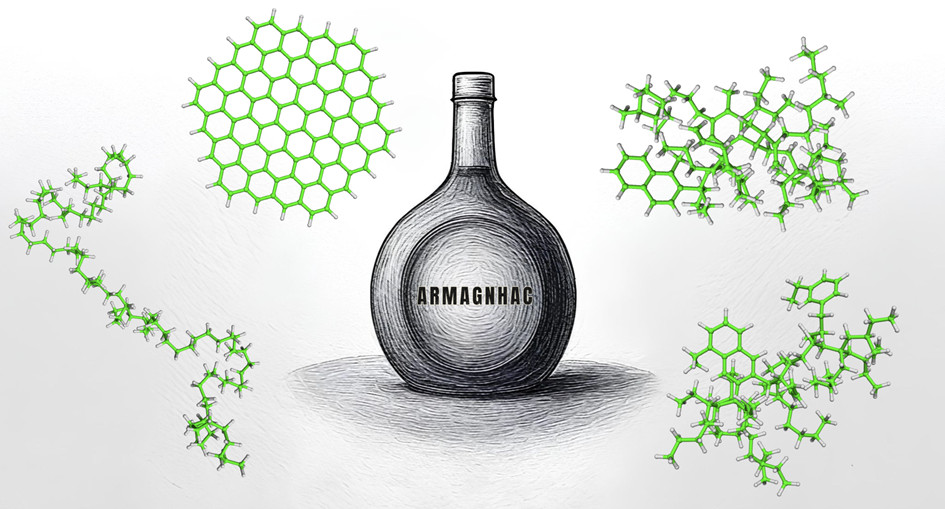From structure to energy and spectral properties
October 30, 2025
A new stochastic and structurally-guided tool has been developed for large-scale generation of atomistic models of hydrogenated amorphous carbons (HACs). The structures of HACs, their energies and their infrared spectra have been derived from calculations performed at an approximate quantum level (DFTB). A dedicated website provides the entire scientific community with free access to this database, named ARMAGNHAC.
Hydrogenated amorphous carbons (HACs) are complex, disordered forms of carbon that are of interest in various scientific fields, such as the study of air pollution from soot particles and astrochemistry.
A new stochastic, structurally guided algorithm has been developed for the large-scale generation of atomistic models of HACs. It consists of a two-step procedure: (i) the randomized generation of 2D structures using the SMILES (simplified molecular input line entry system) description, respecting user-predefined chemical constraints; (ii) the subsequent generation of 3D structures, making use of a stochastic sampling algorithm combined with local optimizations at the DFTB (density functional based tight binding) level.
The method was used to generate the first HACs database, named ARMAGNHAC, which provides structural (cartesian coordinates, functional group ratios, Hill-Wheeler parameters, and aromaticity descriptors), energetic (HOMO−LUMO gap, ionization energy, and electronic affinity), and spectroscopic properties of 4366 HACs. The database (structures and properties) is open access and can be downloaded by users (web site). Correlation plots between the descriptors can be generated on the website, as well as IR spectra, possibly including their evolution as a function of a given property.
A first illustration of how the ARMAGNHAC database can be used has been provided. It has evidenced that the generated HACs exhibit: (i) a rather spherical or prolate shapes, (ii) a bimodal distribution of the HOMO-LUMO gap, separating structures containing either isolated aromatic rings or larger aromatic islands, (iii) a dependence of the ionization potentials and electronic affinities on the size of the largest aromatic island. Moreover, it has been demonstrated that the ARMAGNHAC database can be used to help interpret/reinterpet experimental measurements, as shown for optical band gaps and ionization energies of soot particles.
This work paves the way for future studies aiming to derive relationships between structure, energetic, and spectral properties of HACs, which are essential to interpret interstellar medium spectral observations and experimental measurements.
This work has been carried out as part of a collaboration between LCPQ, LAAS and CEMES and supported by CNRS through the 80|prime grant QUARTET.
Contact:
Nathalie Tarrat | nathalie.tarrat[at]cemes.fr
Publication:
The ARMAGNHAC Database: A Ratio-based Molecular Analyzer and Generator of Numerous Hydrogenated Amorphous Carbons
V. Milia, M. Rapacioli, C. Zanon, J. Cortés, and N. Tarrat
The Journal of Physical Chemistry A (2025)
DOI: https://doi.org/10.1021/acs.jpca.5c04941


